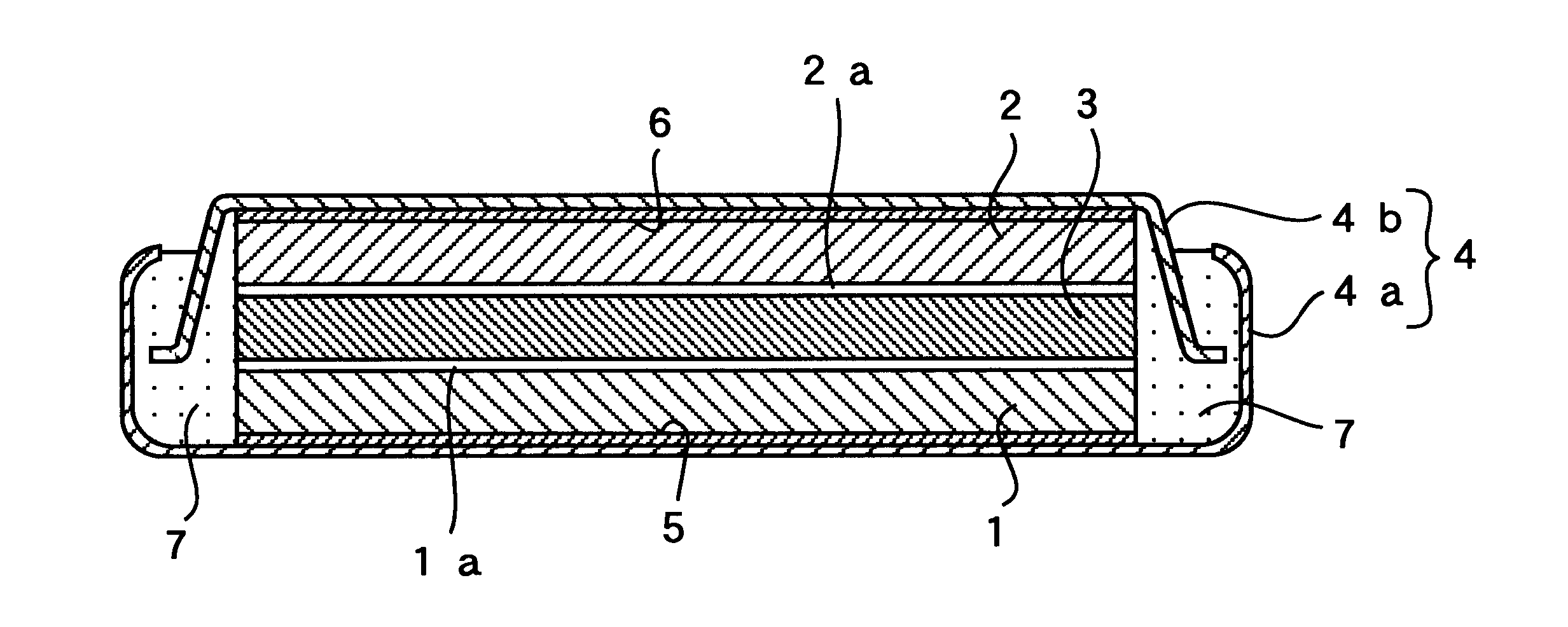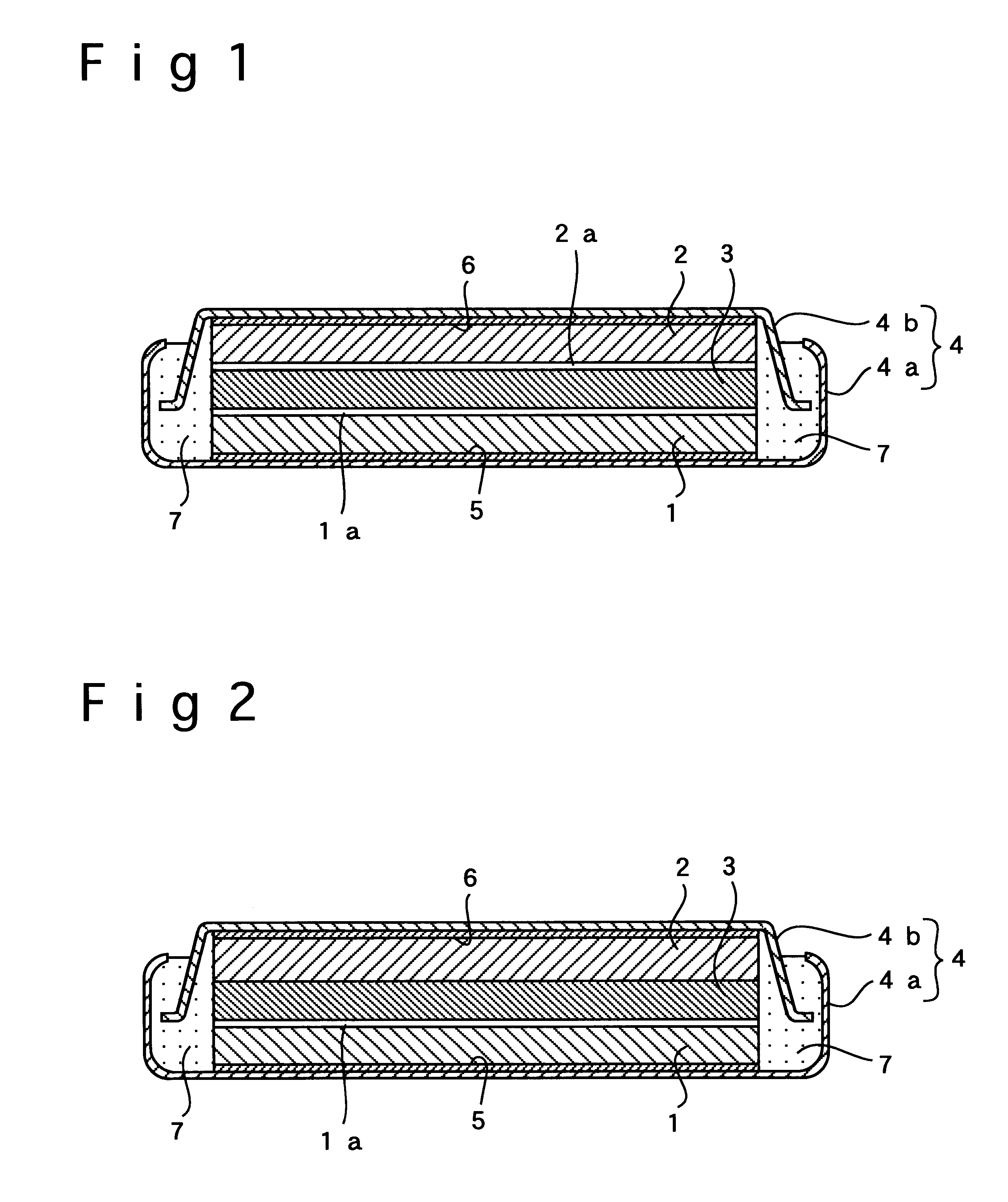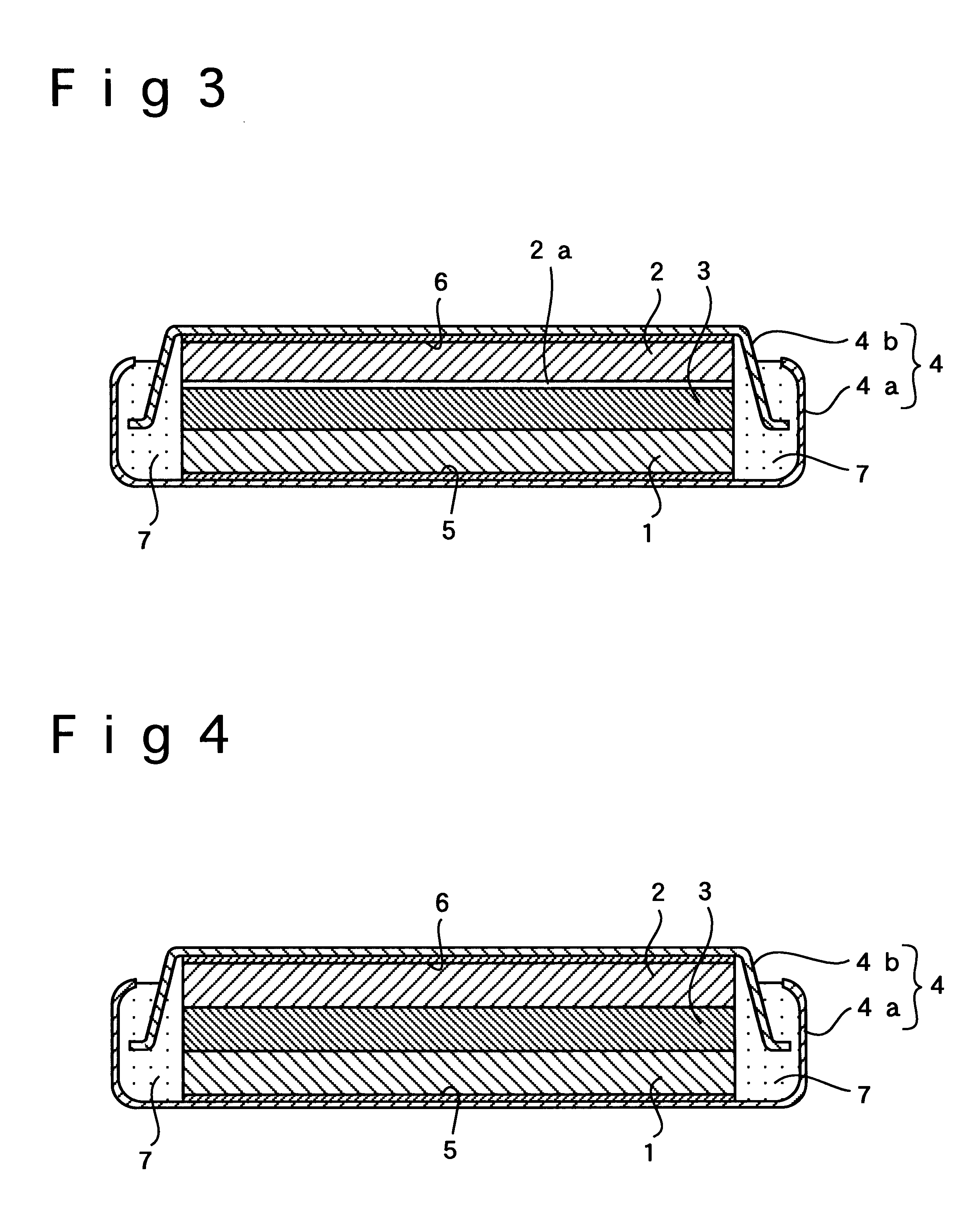Polymer electrolyte batteries having improved electrode/electrolyte interface
a technology of polymer electrolyte and electrode, which is applied in the direction of non-aqueous electrolyte cells, cell components, electrochemical generators, etc., can solve the problems of poor adhesion between the positive or negative electrode, leakage of non-aqueous electrolyte solution or degradation of battery characteristics, and increase of resistan
- Summary
- Abstract
- Description
- Claims
- Application Information
AI Technical Summary
Benefits of technology
Problems solved by technology
Method used
Image
Examples
example 2
In Example 2, a flat-type polymer electrolyte battery was fabricated the same way as in Example 1 except that the negative electrode was free of the inorganic amorphous solid electrolyte film of LiTi.sub.2 (PO.sub.4).sub.3, which was placed at the interface between the negative electrode and the polymer electrolyte in Example 1. As shown in FIG. 2, the inorganic amorphous solid electrolyte film 1a of LiTi.sub.2 (PO.sub.4).sub.3 was interposed only between the positive electrode 1 and the polymer electrolyte 3.
example 3
In Example 3, a flat-type polymer electrolyte battery was fabricated the same way as in Example 1 except that the positive electrode was free of the inorganic amorphous solid electrolyte film of LiTi.sub.2 (PO.sub.4).sub.3, which was placed at the interface between the positive electrode and the polymer electrolyte in Example 1. As shown in FIG. 3, the inorganic amorphous solid electrolyte film 2a of LiTi.sub.2 (PO.sub.4).sub.3 was interposed only between the negative electrode 2 and the polymer electrolyte 3.
examples 4 to 6
In Examples 4 to 6, a different material from that employed by Examples 1 to 3 was used for forming the inorganic amorphous solid electrolyte film at the interface between the polymer electrolyte and the positive or negative electrode. An inorganic amorphous solid electrolyte film was laid on the positive or negative electrode by sputtering using Li.sub.3 N as the target under the same conditions as in Example 1.
In Example 4, an inorganic amorphous solid electrolyte film of Li.sub.3 N was formed at the respective interfaces between the positive electrode and the polymer electrolyte and between the negative electrode and the polymer electrolyte in the aforementioned manner. Except for this, the same procedure as in Example 1 was taken to fabricate a flat-type polymer electrolyte battery wherein the inorganic amorphous solid electrolyte films 1a, 2a were interposed between the positive electrode 1 and the polymer electrolyte 3 and between the negative electrode 2 and the polymer elect...
PUM
| Property | Measurement | Unit |
|---|---|---|
| thickness | aaaaa | aaaaa |
| thickness | aaaaa | aaaaa |
| diameter | aaaaa | aaaaa |
Abstract
Description
Claims
Application Information
 Login to View More
Login to View More - R&D
- Intellectual Property
- Life Sciences
- Materials
- Tech Scout
- Unparalleled Data Quality
- Higher Quality Content
- 60% Fewer Hallucinations
Browse by: Latest US Patents, China's latest patents, Technical Efficacy Thesaurus, Application Domain, Technology Topic, Popular Technical Reports.
© 2025 PatSnap. All rights reserved.Legal|Privacy policy|Modern Slavery Act Transparency Statement|Sitemap|About US| Contact US: help@patsnap.com



